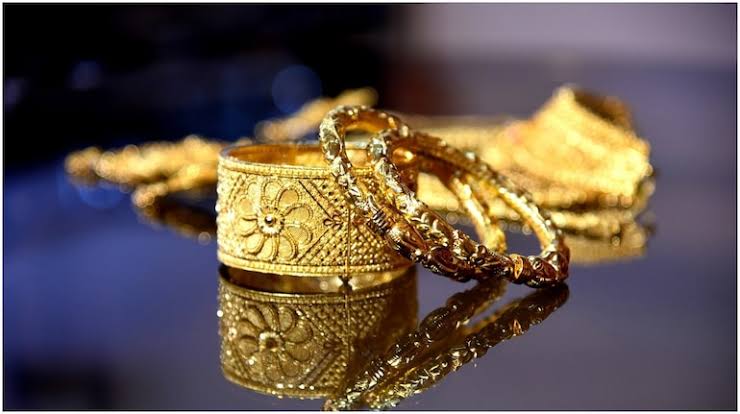Will gold duty hike be a game changer?

Article By
V P Nandakumar
MD & CEO Manappuram Finance Ltd
Tough times call for tough measures and the Union government on July 1 opted for the decisive step of raising effective import duty on gold to 15% from 10.75%. The basic customs duty on gold was 7.5 per cent and this was increased to 12.5 per cent. When agriculture infrastructure development cess (AIDC) of 2.5 per cent is added, the effective duty becomes 15 per cent.
The move came in the wake of the rupee touching a new low of 78.97 against the US dollar. Despite frequent interventions by the Central Bank, the rupee has depreciated by over 5% against the dollar this year. Foreign exchange reserves are declining and the country’s trade deficit had ballooned to a whopping $24.9 billion in May from $6.53 billion in the same month last year.
Burgeoning gold imports have long been perceived as a major contributor to the current account deficit. There is every justification for the government imposing a higher duty on gold imports. But what we need to consider is, what will be the fallout of this and will it have any significant impact?
The rationale behind the latest move is that once the import duty is increased, the price of gold will shoot up, bringing down the demand for the yellow metal, which in turn will stanch the demand for dollars and bring down the trade deficit.
According to an estimate by the World Gold Council, gold imports by India touched its highest level in a decade in 2021. Since last year, the country’s gold purchases have been escalating even further. This May alone, according to government sources, 107 tonnes of gold was imported. India, the world’s second-biggest gold consumer after China, had imported gold worth $46.14 billion during 2021-22, 33.34% higher than the USD 34.62 billion imported in 2020-21.
Expectedly, gold prices in the physical market rose by Rs 900 on July 1, in the wake of the duty hike, and another Rs 500 on Monday (July 3) to reach Rs 52,340 per 10 gm. There were significant gains on the Multi Commodity Exchange of India too. Subsequently, however, gold prices stabilised.
The million-dollar question is whether the government’s game plan of stopping the slide of the rupee and bridging the gap between the country’s exports and imports will be successful. As we know, it is not only the outgo on gold imports that has been hitting the economy hard. The Covid crisis as also the war in Ukraine have pushed up the price of crude oil, coal, edible oil and fertilisers, causing inflation and boosting the demand for dollars.
Another key question is whether the hike in customs duty will dissuade Indians from acquiring their customary quota of gold. History tells us that the answer is ‘no’. As far back as 2013, a series of curbs were brought in including serial hikes in customs duty when there was a current deficit crisis in the country. Policy makers saw gold as a villain even at that time and set about discouraging its consumption. But the demand for gold has only gone up and up.
In my view, there will be demand and good sales when the collective mood is upbeat. After all, gold prices had skyrocketed to 5,200 in the past and we did not see any drop in sales because of it. Today, it is only around 4,700.
Like it or not, Indians have a special fascination for the yellow metal and the country boasts of the largest stockpile of gold in the world. The centuries-old obsession is unlikely to vanish all of a sudden.
As jewellers and representatives of gold merchants’ bodies have pointed out, the sudden spurt in customs duty raises the spectre of a sharp increase in gold smuggling into the country, which will result in loss of revenue for the government.
When there is a significant difference in value, between unaccounted market transactions and official transactions, it is not hard to understand that it will result in an increased flow of gold through unaccounted channels.
Our systems are not that fool proof. So, smuggling is bound to increase and this will defeat the government’s purpose to some extent. Yet another danger is that the money earned from illegal transactions could be used for unholy activities.
I don’t expect imports to come down, since India is not a big producer of gold. There will be some revenue increase for the government but the intention of reducing the import of gold may not get fulfilled. Since there is demand, gold is likely to come in through the grey market.
As for the gold loan industry, there is going to be no adverse impact. The Manappuram group had commissioned a pioneering study a decade and a half ago, which revealed that families in India had about 18,000 to 20,000 tonnes of gold. Every year, gold to the tune of 1,000 tonnes is imported. So, you are talking about 35,000-40,000 tonnes lying at Indian homes, which amounts to 60-65 per cent of the country’s GDP.
Contrast this with the official loan market – banks and NBFCs – that accounts for only 1,000 tonnes of gold. The customers are either from the middle class or lower middle class. You also need to consider that the organised market constitutes only one third of the business, while the unorganised market, made up of money lenders and small-time jewellers, is estimated to be two thirds. So, there is a lot of potential yet to be tapped. Asirvad, the group’s micro finance company, lends to the poorest of the poor and even these people possess gold.
Indians do not invest in gold thinking that it is a hedge against inflation. They buy gold because they attach a lot of sentimental value to it. In short, the hike is not going to impact jewelleries or gold loan companies or imports, which will happen either through official or unofficial channels.
It goes without saying then that we need more imaginative strategies to ease the pressure on the rupee and the widening current account deficit.
Pic Courtesy: google/ images are subject to copyright








